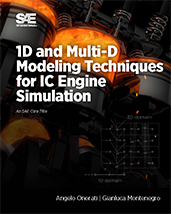Technical Paper
1D Modeling of a High-Performance Engine Fueled with H2 And Equipped with A Low NOx Aftertreatment Device
2024-06-12
2024-37-0009
Hydrogen engines are currently considered as a viable solution to preserve the internal combustion engine as a power unit for vehicle propulsion. In particular, lean-burn gasoline Spark-Ignition (SI) engines have been a major subject of investigations due to the reduced emission levels and high thermodynamic efficiency. This strategy is suitable for the purpose of passenger car applications and cannot be tailored in the field of high performance engine, where the air mass delivered would require oversized turbocharging systems or more complex charging solutions. For this reason, the range of stoichiometric feeding condition is explored in the high performance engine, leading to the consequent issue of abatement of pollutant emissions. In this work a 1D model will be applied to the modeling of a V8 engine fueled with DI of hydrogen. The engine has been derived by a gasoline configuration and adapted to hydrogen in such a way to keep the same performance.

